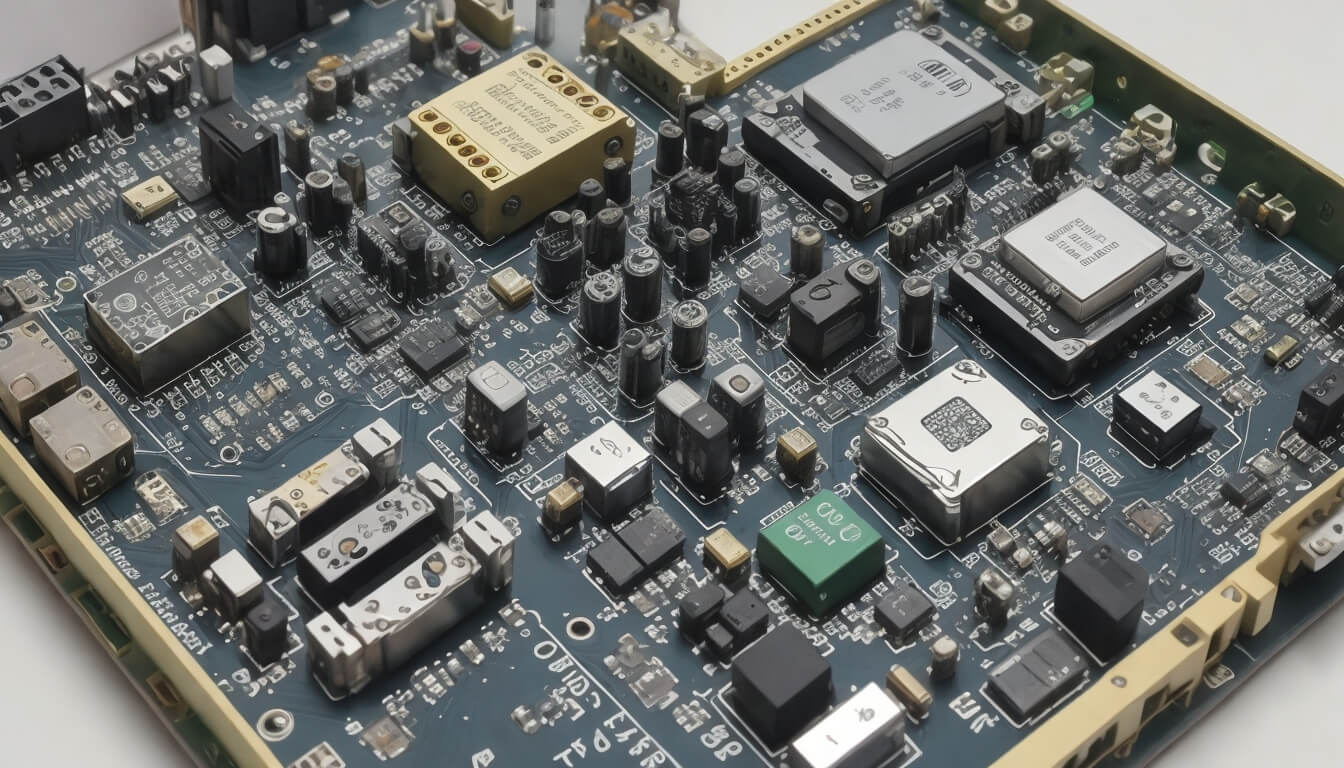
Embedded systems are the unsung heroes of the technological world, silently driving the sophisticated gadgets and complex machinery that we use every day. From smartphones and smartwatches to industrial robots and automotive control systems, embedded technology is ubiquitous. As technology advances at an unprecedented pace, embedded systems are undergoing a transformative phase.
The Evolution of Embedded Hardware Designs
The evolution of embedded hardware designs has been marked by continuous advancements, transforming the landscape from its inception to the present day. Initially emerging as basic control units in early computing devices, embedded systems have evolved into sophisticated components ingrained in various aspects of daily life.
In the early stages, embedded hardware primarily served industrial applications, providing control for machinery and automation. As technology progressed, these systems found their way into consumer electronics, automotive, medical devices, and beyond. The miniaturization of components played a pivotal role, enabling the development of smaller and more powerful embedded systems.
The integration of microcontrollers and microprocessors has been a driving force in the evolution, enhancing computational capabilities. Additionally, the advent of System-on-Chip (SoC) designs consolidated multiple functions into a single chip, optimizing efficiency and reducing power consumption.
Wireless connectivity became a standard feature, facilitating communication between embedded devices and enabling the Internet of Things (IoT). This connectivity evolution expanded the scope of embedded systems, allowing for seamless data exchange and remote control.
Modern embedded hardware prioritizes energy efficiency, aiming for sustainable and eco-friendly solutions. Furthermore, advancements in real-time operating systems (RTOS) and firmware development have contributed to the reliability and performance of embedded systems.
Miniaturization and Modularization
One of the most noticeable trends is miniaturization. Components are getting smaller, yet they pack more functionality than ever before. System on Chip (SoC) and System in Package (SiP) solutions are pushing the boundaries of what’s possible.
Modular designs are also gaining traction, allowing designers to swap out parts and upgrade systems without overhauling the entire architecture. This optimizes the costs and also extends the lifecycle of embedded systems, favoring sustainability.
Power Efficiency and Green Technologies
As the world becomes more environmentally conscious, power efficiency is paramount. Advances in electronics, such as ultra-low-power microcontrollers and energy harvesting technologies, mean embedded systems can operate for longer periods without sacrificing performance.
Innovative green technologies are being incorporated into hardware designs. These include biodegradable PCBs and components sourced from sustainable materials, reflecting a commitment to reducing the electronic waste footprint.
Integration with Advanced Sensors and IoT
The proliferation of the Internet of Things (IoT) has led to a surge in demand for embedded systems integrated with sophisticated sensors. These sensors enable devices to interact intelligently with their environment, opening up new possibilities in automation and data analytics.
Embedded systems are becoming more than just computing platforms; they are the sensory and nervous systems of IoT networks, analyzing and reacting to data in real time.
Software Architectures Evolving with Time
As hardware continues to advance, software is not left behind. The architecture and design of software in embedded systems are also experiencing a renaissance.
Artificial intelligence (AI) and machine learning (ML) are not just buzzwords; they are revolutionizing embedded software. Algorithms that learn from vast datasets can predict behaviors, optimize processes, and automate decision-making within embedded systems.
AI and ML capabilities are being woven into the fabric of embedded software, enabling predictive maintenance in industrial settings, enhancing decision-making in autonomous vehicles, and personalizing experiences in consumer electronics.
The necessity for real-time responses in embedded systems is spurring the development of advanced Real-Time Operating Systems (RTOS). These systems are designed to handle high-throughput data processing with minimal latency, critical for applications like medical devices and air traffic control systems.
RTOS variants are becoming more adaptable, able to meet diverse requirements in terms of memory footprint, scalability, and security.
Open-Source Software and Collaboration
The rise of open-source software in embedded systems cannot be overstated. As communities of developers collaborate openly, the innovation in software architectures is democratized.
Embedded systems benefit from the shared knowledge and collective troubleshooting that open-source platforms foster, leading to more secure, robust, and scalable software solutions.
Edge Computing and Distributed Architecture
With the advent of edge computing, processing is moving closer to where data is generated. This decentralized approach reduces latency and bandwidth demands on central servers by allowing localized processing within embedded devices.
Distributed software architectures are becoming the norm in complex systems like smart cities and industrial automation, where decision-making needs to happen at multiple levels.
Security at the Forefront
Security is a top priority in the evolution of embedded systems. As devices become more connected, they become more vulnerable to cyberattacks.
Modern embedded hardware now includes dedicated security features to safeguard against threats. These may range from secure boot mechanisms to hardware-assisted encryption, ensuring data integrity and confidentiality.
On the software side, the development of more robust software security practices is paramount. This involves everything from secure coding standards to regular updates and patches to defend against evolving cyber threats.
A World Refined by Embedded Systems
Embedded systems are at the heart of innovation, impacting how we live, work, and play. The trends discussed here shed light on a technology that is rapidly becoming more integrated, intelligent, and intuitive.
As we embrace these trends, the importance of having a thorough understanding of both hardware and software aspects cannot be overemphasized. Only then can we harness the true potential of embedded systems to create a smarter, more connected world.
The future of embedded technology holds tremendous promise, driven by continuous advancements and the relentless spirit of innovation. The synergy between state-of-the-art hardware and sophisticated software is ushering in a new era for embedded systems, where the only limit is our own imagination. As developers and engineers continue to push the frontier of what’s possible, the realm of embedded systems will undoubtedly remain an exciting field for years to come.